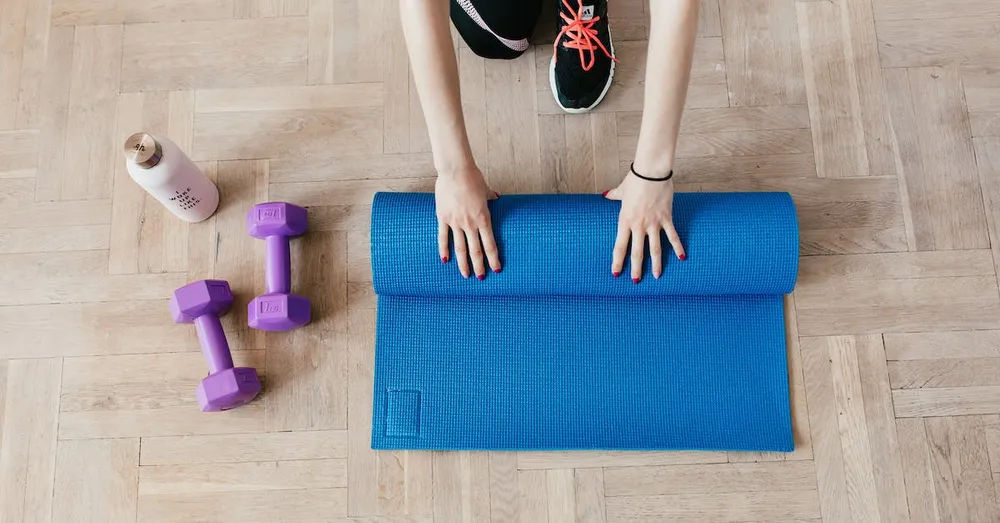
Pilates is a form of exercise that focuses on strengthening the core, improving flexibility, and promoting overall body awareness. It is a low-impact exercise that can be beneficial for people of all ages and fitness levels. If you're new to Pilates, this beginner's guide will provide you with everything you need to know to get started.
First and foremost, it's important to understand the principles of Pilates. These principles include:
- Concentration: Pilates requires focus and concentration to perform the exercises correctly and with proper form.
- Control: Pilates emphasizes controlled, precise movements rather than fast, jerky movements.
- Center: The core, or powerhouse, is the center of the body and is emphasized in Pilates exercises.
- Flow: Pilates exercises should be performed smoothly and with a flowing, continuous movement.
- Precision: Pilates exercises require precise alignment and form to be effective.
It's also important to note that Pilates can be done with or without equipment. Mat Pilates, which is done on a mat and uses your own body weight as resistance, is a popular form of Pilates for beginners. Equipment-based Pilates, such as reformer Pilates, can be more challenging and may require more experience and instruction.
When starting Pilates, it's essential to find a qualified instructor who can guide you through the exercises and ensure that you are using proper form. Pilates classes are typically offered at gyms, yoga studios, or by independent instructors. You can also find Pilates videos and programs online, but it's important to make sure that the instruction is safe and appropriate for beginners.
Another important aspect of Pilates is breathing. Proper breathing techniques are crucial for the effectiveness of Pilates exercises. In general, you should inhale through your nose and exhale through your mouth. It's also important to engage your core muscles when you inhale and exhale.
When first starting Pilates, it's important to start slowly and not push your body too hard. Pilates exercises can be modified to accommodate different fitness levels, so it's important to listen to your body and not push beyond your limits.
It's also important to note that Pilates should not cause pain. If you experience pain while performing Pilates exercises, stop immediately and talk to your instructor.
In conclusion, Pilates is a low-impact exercise that can help to strengthen the core, improve flexibility, and promote overall body awareness. It's important to understand the principles of Pilates, which include concentration, control, center, flow, and precision. Pilates can be done with or without equipment and it's essential to find a qualified instructor who can guide you through the exercises and ensure that you are using proper form. Additionally, proper breathing techniques are crucial for the effectiveness of Pilates exercises. Remember to start slowly and listen to your body, Pil
ates should not cause pain. As you continue to practice Pilates, you will notice improvements in your posture, balance, and overall strength.
Another important aspect of Pilates is that it can be adapted to meet your specific needs and goals. Whether you're looking to improve your athletic performance, recover from an injury, or simply improve your overall health and wellness, Pilates can be tailored to meet your specific needs.
It's also important to note that Pilates can be a great complement to other forms of exercise. Many athletes, dancers, and fitness enthusiasts incorporate Pilates into their training regimen to improve their overall performance and prevent injury.
Pilates is also a great form of exercise for those with injuries or chronic conditions. It's a low-impact exercise that can be modified to accommodate different fitness levels and abilities. Many physical therapists and rehabilitation specialists use Pilates as part of their treatment plans.
To get the most out of your Pilates practice, it's important to be consistent. Aim to practice Pilates at least two to three times a week. The more you practice, the more you will see improvements in your strength, flexibility, and overall well-being.
In conclusion, Pilates is a versatile and beneficial form of exercise that can be adapted to meet your specific needs and goals. It's important to find a qualified instructor, start slowly, listen to your body and practice Pilates consistently. Additionally, Pilates can be a great complement to other forms of exercise, and it's also a great form of exercise for those with injuries or chronic conditions. Remember that Pilates should not cause pain and it's important to take care of your body and practice with proper form. By following these guidelines, you can get the most out of your Pilates practice and improve your overall health and well-being.
Комментарии
Отправить комментарий